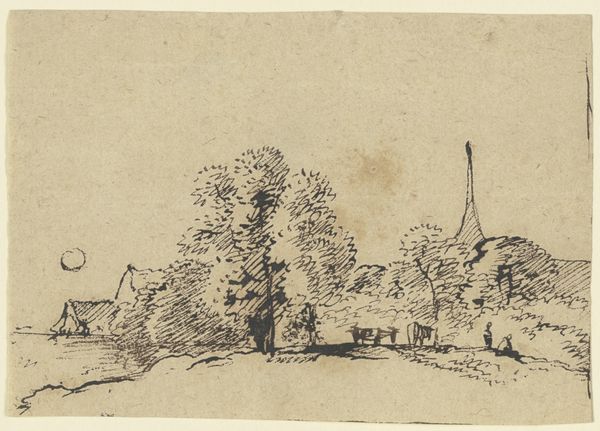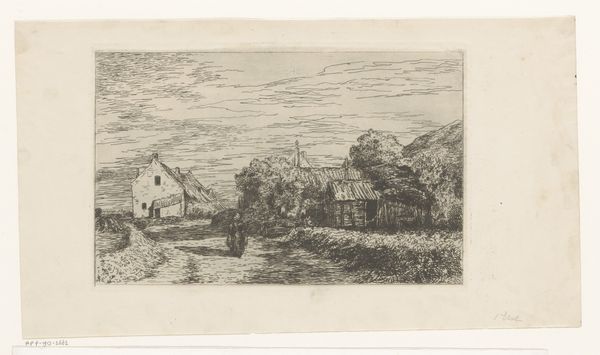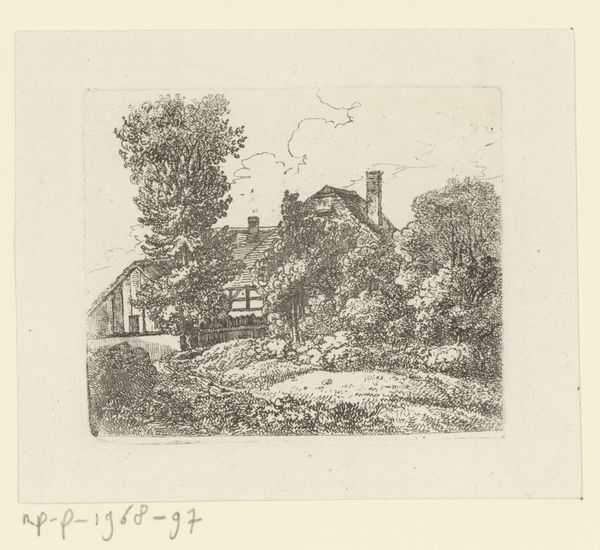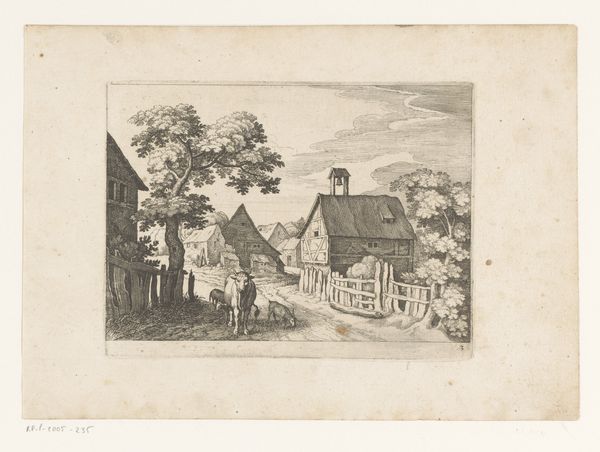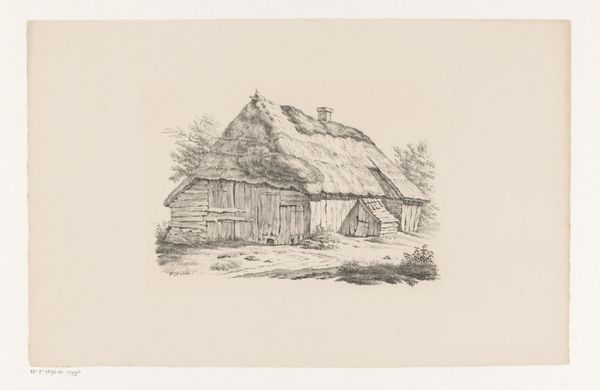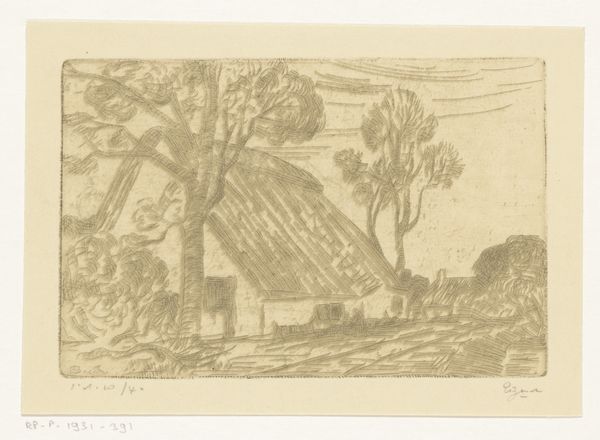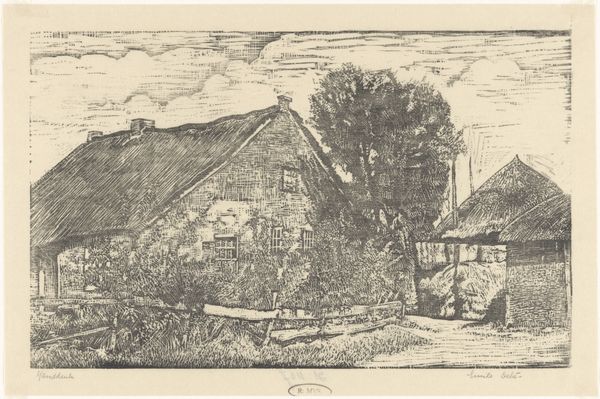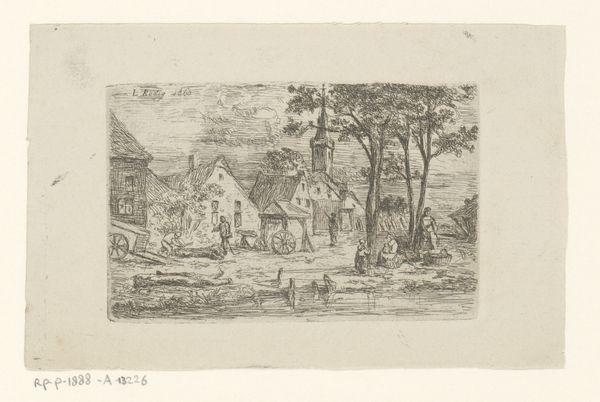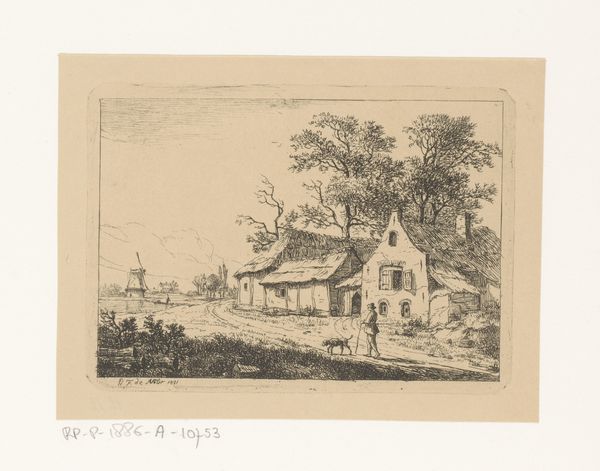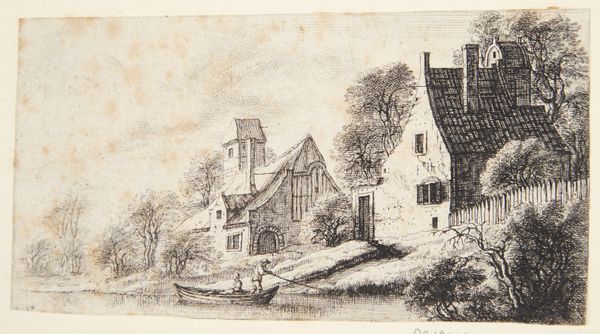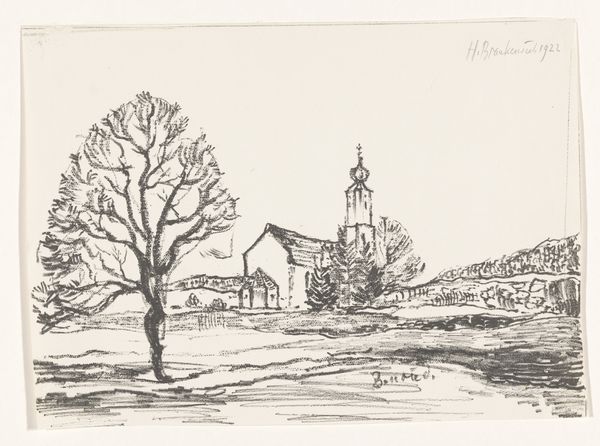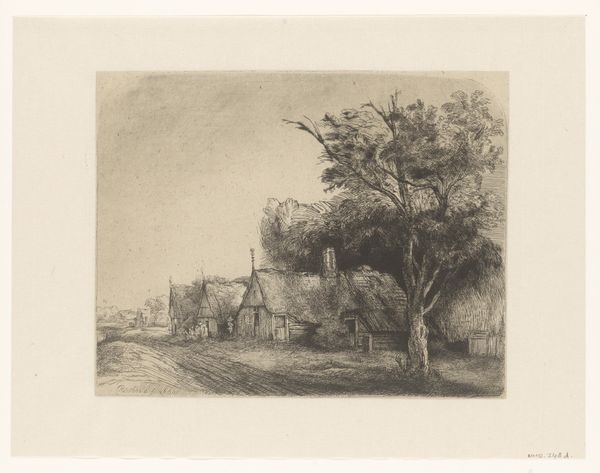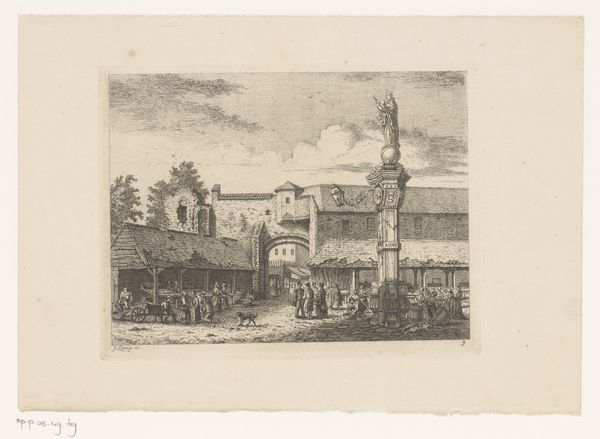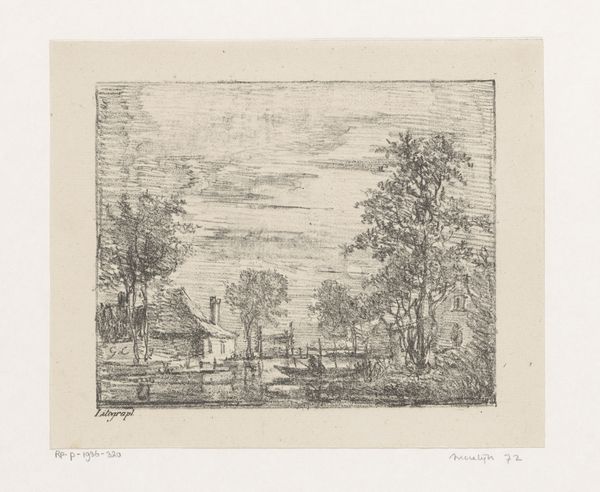
drawing, print, etching
#
drawing
#
dutch-golden-age
# print
#
etching
#
landscape
#
etching
#
watercolor
#
realism
Dimensions: height 294 mm, width 335 mm
Copyright: Rijks Museum: Open Domain
Curator: This etching, titled "Boerderij aan het water", which translates to "Farm by the Water," is attributed to Willem de Zwart, and it's thought to have been created sometime between 1872 and 1931. Editor: It evokes a very somber mood for me. The monochrome palette and the delicate lines almost feel like a memory fading, or a place slowly succumbing to time. There's a distinct sense of melancholy, wouldn’t you agree? Curator: Definitely. The stillness of the water and the almost ghostly quality of the farmhouse contribute to that feeling. The vertical poles remind me of totems and perhaps indicate connections with both the earth and sky. Perhaps this reflects an enduring symbol of Dutch resilience amidst changing social conditions? Editor: It might also hint at a societal structure under pressure, considering the shifting socio-economic landscape during that period. Agrarian life was romanticized but also becoming less viable for many families. It's a poignant look at labor and class. Curator: I'm also intrigued by the artist’s choice to depict this particular farm. It’s not idealized, like some Golden Age landscapes. De Zwart seems to focus on its everyday, lived-in reality, with an unromanticised view. I think we can read this image as capturing how Dutch society viewed nature, and the home. Editor: Absolutely. The work’s materiality contributes to its message. The choice of etching lends itself well to expressing those subtler aspects of societal change. We see what the changing landscapes means to the family, its people and community. Curator: The reflections in the water almost give the farm a transient feel, like it's about to dissolve, reflecting the ephemeral nature of life itself. Editor: It encourages us to examine not just the physical appearance of the farm but also the intangible weight of tradition, loss, and how the art becomes a quiet critique of modernization’s impact on rural communities. Curator: That’s a beautiful observation, placing a traditional symbol inside social anxieties. Editor: Indeed. What seems at first glance like a simple etching unfolds into a deeper consideration of its people, and their changing world.
Comments
No comments
Be the first to comment and join the conversation on the ultimate creative platform.
